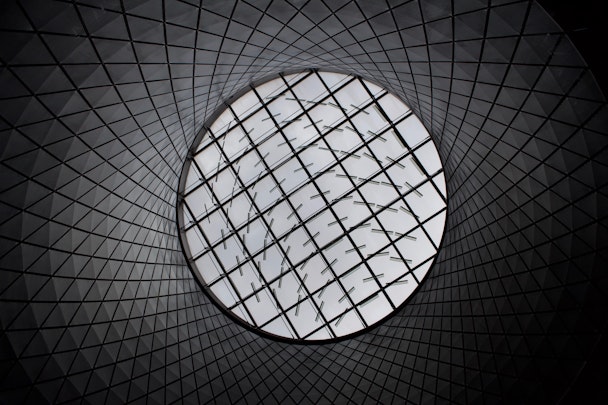Moving beyond design systems: introducing design centers of excellence
Digesting a recent conversation with Adobe, DPDK's chief creative officer Michael Vromans reveals why a complete overhaul of design teams might be necessary for brands to scale.

If they want to excel, brands musn't ignore the power of consistent design / Raymond T via Unsplash
The topic of scaling design isn’t new. Every brand wants to be able to deliver consistent, high-quality design. That's why most (if not all) brands are heavily investing in design tools. But I’m here to tell you that design systems alone aren’t enough to successfully scale.
Scaling design isn’t just about getting bigger. It’s also about tackling the challenges that come with growth and ensuring that designs continue to reflect your brand, give you a competitive edge, and add value to the experiences you craft. Unfortunately, for brands with complex digital ecosystems, a design system (or even multiple) can’t guarantee all the above.
I recently spoke with Adobe about scaling design and the need to move beyond design systems toward design infrastructures. At DPDK, we call these Design Centers of Excellence (DCE). Excellence is the key word here: a DCE paves the way toward scaling design successfully.
Advertisement
The challenges of complex digital ecosystems
Today’s brands have more touchpoints, communication channels, and platforms than ever before. Customers are interacting with brands in various ways, and brands need to provide a seamless experience across their entire digital ecosystem. That's no cakewalk.
Brand inconsistencies, time spent on tedious and low-value work, pressure to reduce time-to-market, and diminished creativity are just a few of the challenges that arise when scaling design. Together, these challenges call for a strong foundation from which brands can scale.
Advertisement
While design systems are a logical step towards scaling design, they’re not enough for brands with comprehensive digital ecosystems. Design systems typically cater to one product or touchpoint. As your product portfolio grows and your touchpoints increase, more design systems will need to be introduced to your design network.
Meanwhile, design systems are often treated as silos. Different teams work with their own systems, and these systems aren’t always connected. This can lead to inconsistent design, duplicated work, complicated design processes, and misalignments between teams.
Suggested newsletters for you
Design should be a C-suite priority
Brands need to run a tight ship with their customer experience (CX) to ensure that design consistency and quality are up to par. The C-suite has to embrace the power of design and make it part of their strategic direction.
Look at some of the most successful brands out there, like Apple and Nike. It’s no coincidence that they’re excelling at design. These brands have acknowledged design as a key driver of business success and are giving it the attention it deserves.
You need a single source of truth in place that transcends departmental boundaries and connects your entire design network - from design systems to components libraries and production files. This calls for a design infrastructure, or DCE.
A DCE is essentially the family tree of your design ecosystem. It contains all design files in a hierarchical structure, starting with your core brand design system which sits at the top of the hierarchy. This is the base of your DCE - it connects and influences all systems within your design network.

Building a DCE is by no means a one-person, or even one-team, job. The entire C-suite needs to be aligned. For brands with mature digital ecosystems, setting up a DCE may mean overhauling current structures and processes; it might require change management. This may sound daunting, but the long-term benefits of having a DCE in place are tremendous.
Why you need a DCE
With a DCE, there’s a single source of truth in place, making it easier to store, organize, and share files. Design and development cycles will take less time as you’ll be able to plug and play products onto your DCE, enabling designers to use elements and components in connected design systems and reducing time-to-market.
The same goes for redesigns and redevelopment, as changes only need to be made to the relevant design system - all connected systems and products will automatically update with it. Not to mention the improved collaboration between designers and developers, increased cost efficiency, and creativity boost that comes with ridding designers of repetitive, mundane tasks.
Your DCE should be run and managed by a highly skilled team that shapes and maintains your design standards. I call this team the 'guardians of the design galaxy', as they’re responsible for safeguarding and growing your DCE.
With a dedicated DCE, staying ‘on-brand’ is made simpler thanks to better quality control. New design requests go through this team, comprising designers, strategists, product owners, and front-end developers. A true melting pot.
Setting up a DCE isn’t easy, but building one can transform your design capabilities.
Watch the full talk with Adobe here.
Content by The Drum Network member:

DPDK
20 years of transformation, change, innovation, and adaptation. We saw tech emerge and disappear, trends come and go and customer expectations change and grow. Today...
Find out more
